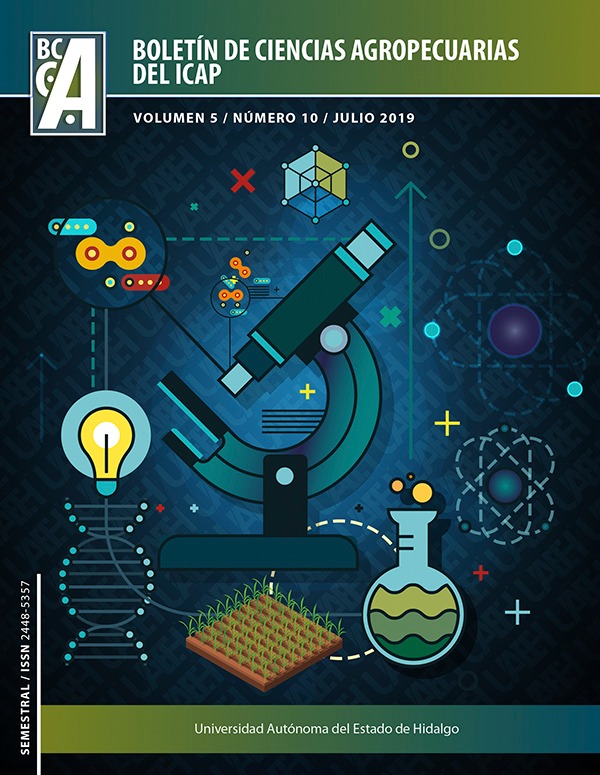Evaluation of a Enriched Pasta with Flour of Oxalis tuberosa in Wistar Rats with Induction of Metabolic Syndrome
Abstract
The current lifestyle can promote inadequate eating habits, causing serious health problems. Metabolic syndrome is considered an important form of cardiovascular risk and diabetes. The Oxalis, is an Andean tuber, with a high concentration of carbohydrates, essential amino acids, fiber, minerals and natural antioxidants such as in phenolic acids, flavones and anthocyanins. The aim of this study was to evaluate the nutritional properties of a enriched pasta with flour of Oxalis tuberosa and its effect on markers of the metabolic syndrome in biochemical and anthropometric parameters induced in Wistar rats. The total phenolic content and antioxidant activity were higher in pasta with Oxalis, as well as in protein and fiber. The induction group fed with the Oxalis pasta showed lower concentration in glucose, cholesterol and triglycerides in comparison to the other groups. These data suggest that the Oxalis tuberosa pasta may help reduce the pathological damage of metabolic syndrome in vivo.
Downloads
References
A.O.A.C. (1995). Official Method of Analysis. Association of official Analytical Chemist, 16th . Washington D.C. USA.
Basu, A., Rhone, M., & T.J., L. (2010). Berries: emerging impact on cardiovascular. Nutrition Reviews, 68(3), 168-177.
Bello, B., Sánchez, G. A., Báez, E. G., Fernández, J., & Achiong, F. (2013). Síndrome Metabólico: un problema de salud con múltiples definiciones. Revista Médica Electron, 34(2), 199-213.
Brand-Williams, W. C. (1995). Use of a free radical method to evaluate antioxidant activity. LWT - Food Science and Technology, 28, 25-30.
Bravo, L. (1998). Polyphenols: Chemistry, dietary sources, metabolism, and nutritional significance. Nutririon Reviews, 56, 317-33.
Campos, D., Noratto, G., Chirinos, R., & Arbizu, C. (2006). Antioxidant capacity and secondary metabolites in four species of andean tuber crops: Native potato (Solanum sp.), mashua (Tropaeolum tuberosum Ruiz and Pavón), oca (Oxalis tuberosa Molina) and ullucu (Ullucus tuberosum). Journal Science Food Agriculture, 86, 1481-1488.
Chu, Y. F., & Liu, R. H. (2005). Cranberries inhibit LDL oxidation and induce LDL receptor hepatocytes. Life Sciences, 77(15), 1892-1901.
Fernández, T. J. C. (2016). Síndrome Metabólico y Riesgo Cardiovascular. Revista CENIC Ciencias Biológicas, 47 (2), 106-119.
Flores, H. E., Walker, T. S., Guimaraes, R. L., & H., B. P. (2003). Andean root and tuber crops: Underground rainbows. Hortic. Science, 38, 161–167.
Jiménez, M. E., Rossi, A., & Sammán, N. (2015). .Health properties of oca (Oxalis tuberosa) and yacon (Smallanthus sonchifolius). Food & Function, 27, 20-30.
Kunstmann, S. (2008). Síndrome Metabólico y Riesgo Cardiovascular. Revista Médica Clínica Condes, 19(1), 40-46.
León, M., Villacorta, M. Y., & Pagador, S. E. (2011). Composición química de oca (Oxalis tuberosa), arracacha (Arracaccia xanthorriza) y tarwi (Lupinus mutabilis). Formulación de una mezcla base para productos alimenticios. Revista Venezolana de Ciencia y Tecnología de Alimentos.
Merendino, N., Romina, M., Costantini, L., & A., M. (2014). A new “functional” pasta containing tartary buckwheat sprouts as an ingredient improves the oxidative status and normalizes some blood pressure parameters in spontaneously hypertensive rats. Food & Function, 5, 1017-1026.
Qin, B., & Anderson, R. (2012). An extract of chokeberry attenuates weight gain and modulates insulin, adipogenic and inflammatory signalling pathways in epididymal adipose tissue of rats fed a fructose-rich diet. Br J Nutr, 108, 581–587.
Reed, J. (2002). Cranberry flavonoids, atherosclerosis and cardiovascular health. Critical Reviews in Food Science and Nutrition, 52, 301-316.
Re, R., Pellegrinini, N., Proteggente, A., Panala, A., Yang, M., & Rice-Evans, C. (1999). Antioxidant activity applyng an improved ABTS radical cation decoloration assay.Free radical. Biol. Med., 10, 1231-1237.
Ross, J. A., & Kasum, C. M. (2002). Dietary flavanoids: Bioavailability, metabolic effects, and safety. Annual Review in Nutrition, 22, 19-34.
Singleton, V., & Rossi, J. (1995). Colorimetry of total phenolics with phosphomolybdic–phosphotungstic acid reagents. American Journal of Enology and Viticulture, 16, 144-158.
Tsao, R., & Deng, Z. (2004). Separation procedures for naturally occurring antioxidant phytochemicals. Journal Chromatography, 85-99.
Vicente, F. (2016). Efecto de la sustitución de sémola de trigo con harina de Oxalis tuberosa en las propiedades fisicoquímicas y reológicas de pastas. Tesis de Maestría UAEH.










